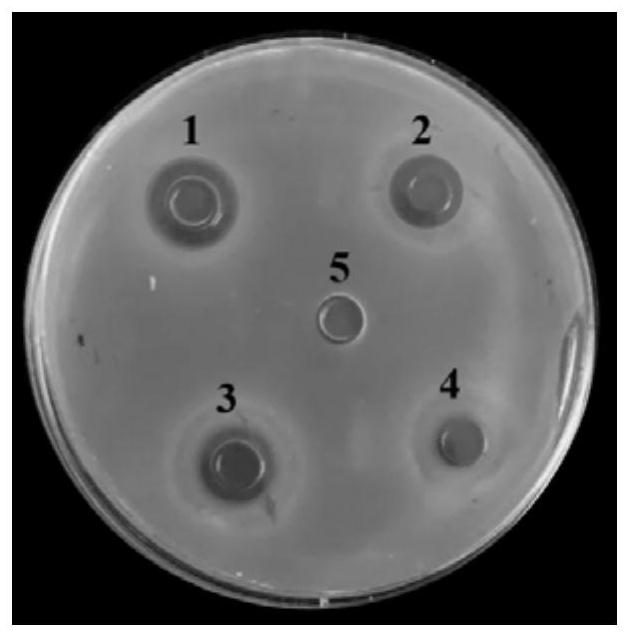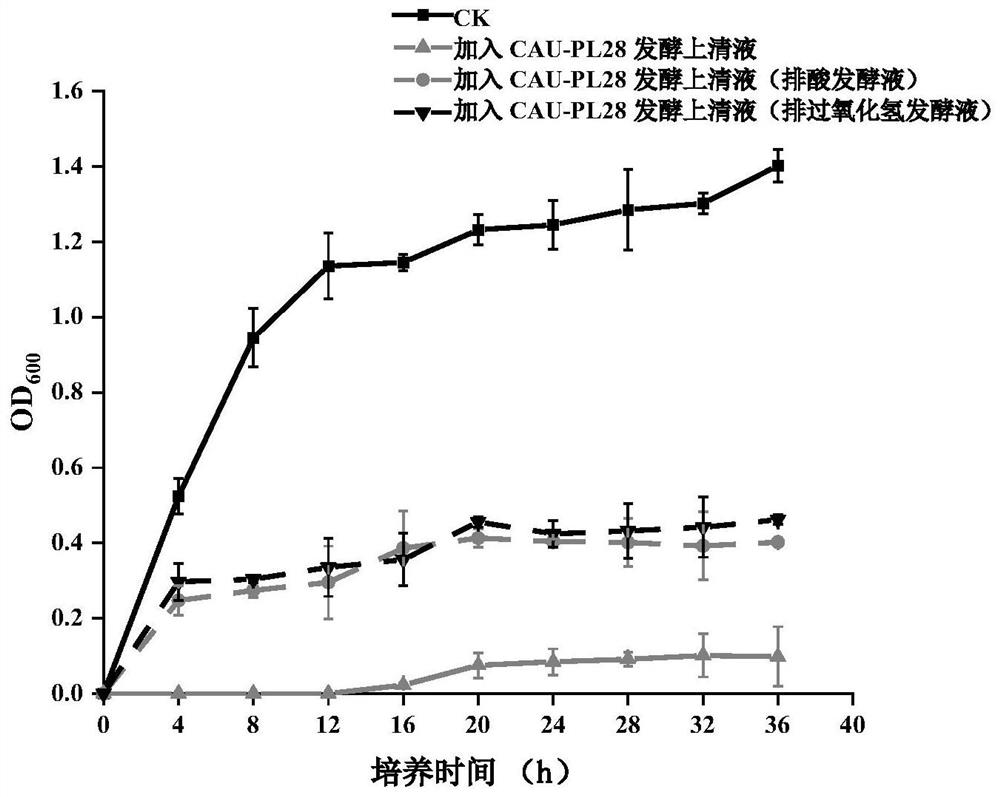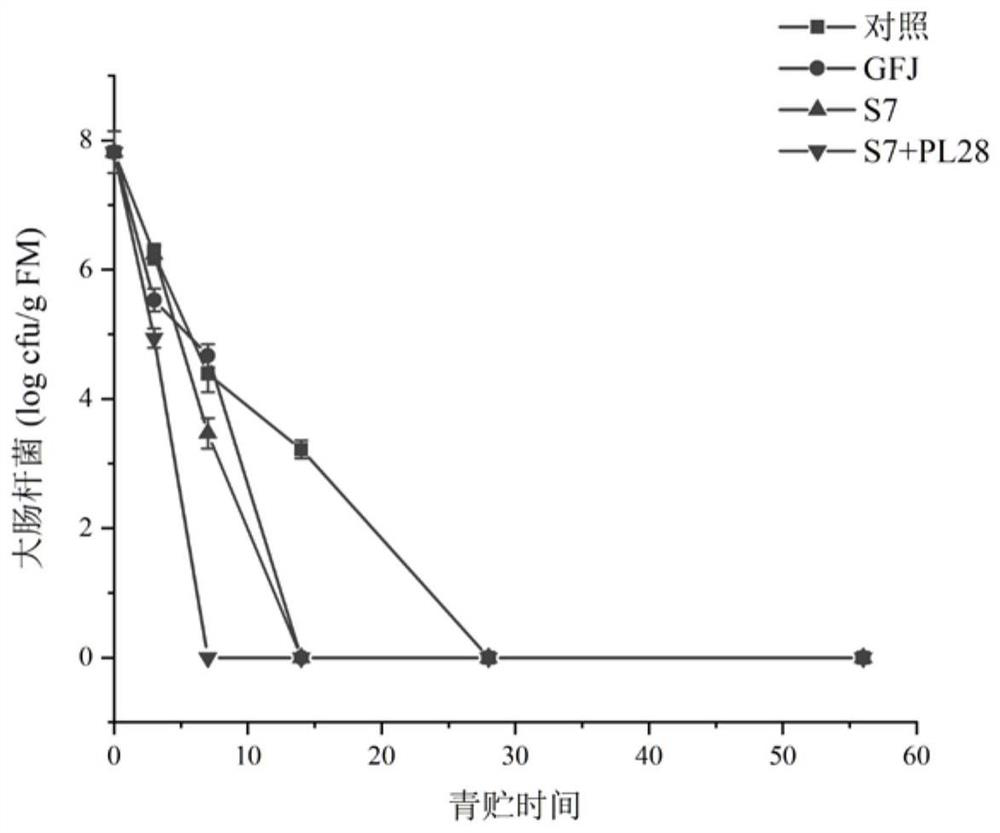Bacteriocin-producing lactobacillus plantarum and compound application of lactobacillus plantarum in silage
A technology of Lactobacillus plantarum and silage, which is applied in the field of bacteriocin-producing Lactobacillus plantarum and its compound application in silage, and can solve problems such as inapplicability
- Summary
- Abstract
- Description
- Claims
- Application Information
AI Technical Summary
Problems solved by technology
Method used
Image
Examples
Embodiment 1
[0074] Example 1. Isolation and identification of Lactobacillus plantarum CAU-PL28 and CAU-S7
[0075] 1. Isolation of Lactobacillus plantarum
[0076] Separation of Lactobacillus plantarum by dilution plate method: Weigh 20 g of mulberry silage under aseptic conditions, place it in a conical flask filled with 180 mL of sterile distilled water, shake well, and obtain a 10-fold diluted sample suspension, then press The same 10-fold dilution method was directly serially diluted to 10 -6 . Select an appropriate dilution, take 0.1 mL and evenly spread it on the MRS solid medium plate, incubate in a 30°C incubator for 48 hours, and count the plates. According to the characteristics of colony size, shape and color, typical colonies were picked for Gram staining microscopy and catalase test. All strains that are Gram-positive and catalase-negative can be initially identified as lactic acid bacteria. They are streaked and purified twice on MRS medium, inoculated into MRS solid slan...
Embodiment 2
[0126] Example 2, the application effect of Lactobacillus plantarum CAU-PL28 and Lactobacillus plantarum CAU-S7 added to silage alone or in combination
[0127] 1. Preparation of silage (taking woody feed tree as an example)
[0128] After the first crop of paper mulberry is cut, the undried whole mulberry tree is shortened to about 2 cm, and mixed evenly to obtain silage raw materials.
[0129] 2. Preparation of Lactobacillus plantarum CAU-PL28 and Lactobacillus plantarum CAU-S7 bacterial agents
[0130] Lactobacillus plantarum CAU-PL28 and Lactobacillus plantarum CAU-S7 were respectively inoculated (inoculum number of live bacteria 1:1) in liquid MRS medium (pH value 6.5), 30°C, 150rpm shaking culture for 24h, respectively to obtain plants The bacterial liquid of Lactobacillus CAU-PL28 and the bacterial liquid of Lactobacillus plantarum CAU-S7. The cells of the two bacterial solutions were collected and freeze-dried respectively to prepare two bacterial powders. Two bacte...
PUM
 Login to View More
Login to View More Abstract
Description
Claims
Application Information
 Login to View More
Login to View More - R&D
- Intellectual Property
- Life Sciences
- Materials
- Tech Scout
- Unparalleled Data Quality
- Higher Quality Content
- 60% Fewer Hallucinations
Browse by: Latest US Patents, China's latest patents, Technical Efficacy Thesaurus, Application Domain, Technology Topic, Popular Technical Reports.
© 2025 PatSnap. All rights reserved.Legal|Privacy policy|Modern Slavery Act Transparency Statement|Sitemap|About US| Contact US: help@patsnap.com



